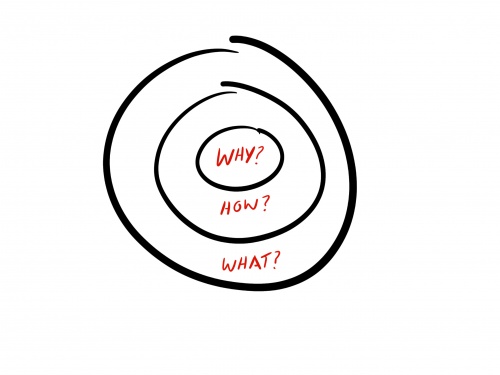Purpose & Strategy
Purpose and Strategy
Strategic thinking is to consider things at a high level and evaluate the longer ranging impacts from our actions or the actions of others. Tactical thinking by comparison considers the near-term actions and what can be done to achieve the best results right now.
The tendency for most organisations is to only focus on the near term tactical actions, and although mostly successful in the near term, the longer-term impacts can be neglected. Hence, some high-level thinking and positioning of the product or service to consider why it is needed, the potential pitfalls and the far-reaching consequences of introducing the new product or service can help to avoid risk, get the best out of the team and satisfy the customer needs.
Injecting some strategic thinking can correlate to a product’s success and how it is received in the market, and so should be a line of enquiry for any new venture.
Visioning
Having a vision and a sense of purpose can galvanise efforts towards a project, especially if the purpose of the work is to contribute to some socially responsible goal that will benefit others for example.
Most programs of work in practice neglect to have a vision, and instead focus on delivering their features to the market efficiently without any high-level perspective or cohesion to the work. This can result in a product with superfluous features or a disjointed customer experience, as the tactical approach to deliver more features overshadowed the strategic thinking of “why” we wanted the features in the first place, and what impact do these new features have on the overall user experience and the product long term.
A good vision is one that inspires and provokes a “greater than the self” purpose that aligns the teams’ personal values to a product they can believe in and are passionate about.
Golden Circle (Simon Sinec)
Simon Sinec presents a model called the Golden Circle[1], which looks to use the following format:
- Why – why will this product revolutionise my experience and why do I need it to achieve my goals?
- How – how will this product help me to achieve my goals?
- What – what is the product and what are the features?
Most organisations tend to market and sell the “what” first and then explain “how” they will work, finally answering the “why” you need it question. Reversing the order to focus on the “why” first can really help to understand the customers’ needs, motivations and their goals that they are trying to satisfy, which leads to a higher awareness and alignment of the purpose behind the product.
As well as using this approach for advertising and marketing, it can also be used to construct a vision statement for the work.
For example:
- We want to combat global warming by reducing carbon emissions of transport, (the “why”.)
- We can achieve this by reducing the number of vehicles on the roads by offering spare seats to paying customers, (the “how”.)
- Our smartphone app called “Spare Share” allows users to sell and rent spare seats in registered vehicles, (the “what”.)
See Also
- Product Owner
- Evolutionary Strategy
- Release Strategy
- Strategic Awareness
- Backlog Strategy
- Backlog Strategy Archetypes
References
- How Great Leaders Inspire Action accessed 4 July 2018
